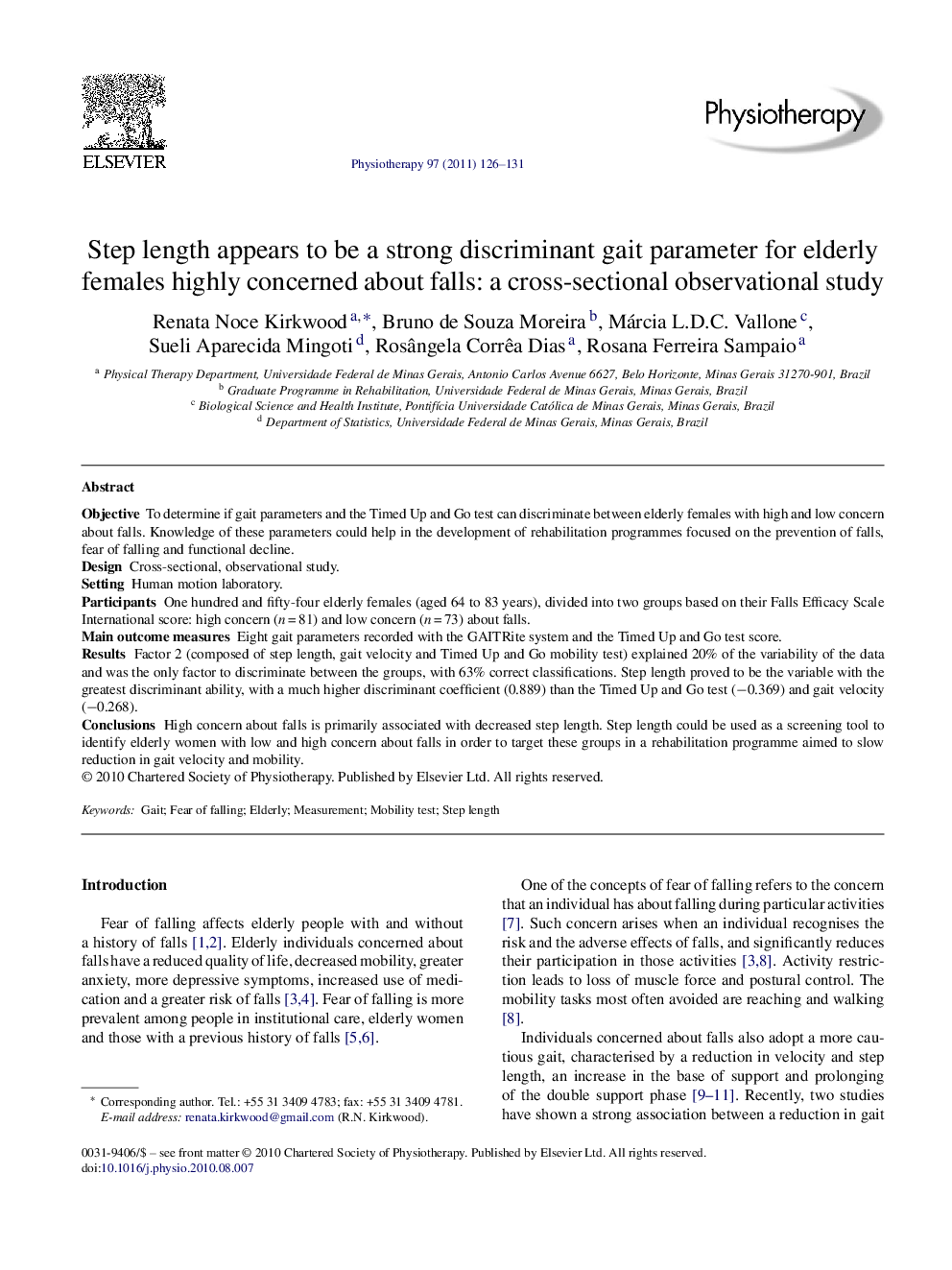| کد مقاله | کد نشریه | سال انتشار | مقاله انگلیسی | نسخه تمام متن |
|---|---|---|---|---|
| 2627831 | 1136111 | 2011 | 6 صفحه PDF | دانلود رایگان |

ObjectiveTo determine if gait parameters and the Timed Up and Go test can discriminate between elderly females with high and low concern about falls. Knowledge of these parameters could help in the development of rehabilitation programmes focused on the prevention of falls, fear of falling and functional decline.DesignCross-sectional, observational study.SettingHuman motion laboratory.ParticipantsOne hundred and fifty-four elderly females (aged 64 to 83 years), divided into two groups based on their Falls Efficacy Scale International score: high concern (n = 81) and low concern (n = 73) about falls.Main outcome measuresEight gait parameters recorded with the GAITRite system and the Timed Up and Go test score.ResultsFactor 2 (composed of step length, gait velocity and Timed Up and Go mobility test) explained 20% of the variability of the data and was the only factor to discriminate between the groups, with 63% correct classifications. Step length proved to be the variable with the greatest discriminant ability, with a much higher discriminant coefficient (0.889) than the Timed Up and Go test (−0.369) and gait velocity (−0.268).ConclusionsHigh concern about falls is primarily associated with decreased step length. Step length could be used as a screening tool to identify elderly women with low and high concern about falls in order to target these groups in a rehabilitation programme aimed to slow reduction in gait velocity and mobility.
Journal: Physiotherapy - Volume 97, Issue 2, June 2011, Pages 126–131